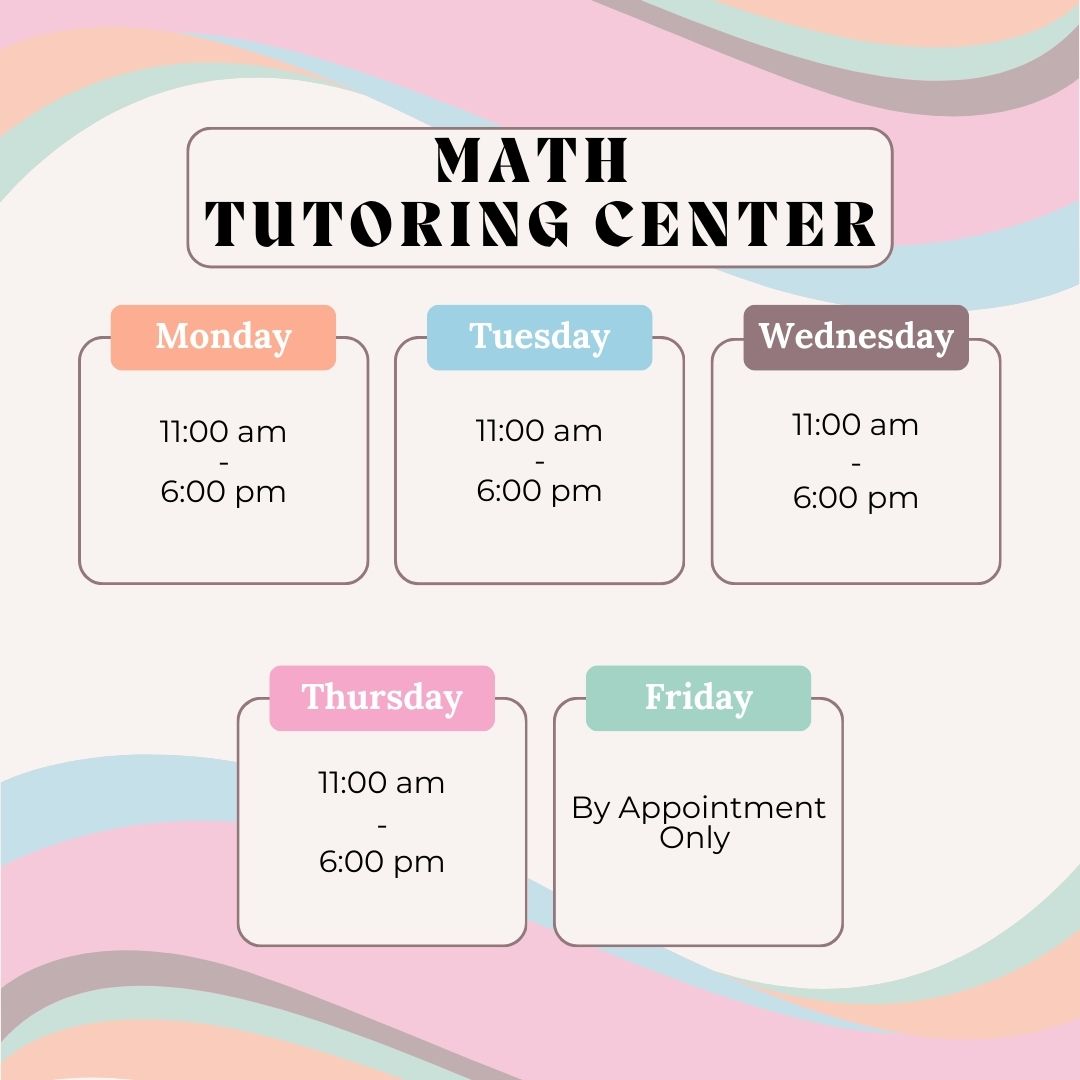With midterms right around the corner, students can prepare in many ways. Midterms are typically cumulative exams that classes give in the middle of the school term. Students can use many resources on campus and online to prepare for midterm exams.
West Texas A&M University offers the Tutoring Assistance Program (TAP). TAP is free for students, and students schedule appointments for tutoring sessions. Sessions can be conducted one-on-one or in pair and group settings. Students can schedule appointments for core-curriculum subjects in math and sciences but are not limited to these subjects. TAP helps students improve study habits, improve course grades and help students better understand subjects.
There are three different walk-in tutoring centers students have access to through TAP. The three centers are the accounting tutoring center, the math tutoring center and the science tutoring center. The accounting tutoring center is open from 9 a.m. to 6 p.m. on Monday and Wednesday, 12:15 p.m. to 6 p.m. on Tuesday and Thursday and by appointment only on Friday. The math tutoring center is open from 11 a.m. to 6 p.m. on Monday through Thursday, then by appointment only on Friday. The science tutoring center is open 11 a.m. to 6 p.m. on Monday, Tuesday and Thursday, 11 a.m. to 12:45 p.m., 3 p.m. to 6 p.m. on Wednesday, and 10 a.m. to 3 p.m. on Friday.
TAP will also match students with tutors qualified to meet their specific needs within a particular subject. Students will gain direct contact with their tutors to plan and schedule when to meet up during the semester for sessions. TAP has tutors for specific courses and linked a list to their website. Students will also need to fill out a form to request a match with a tutor; tutors are not guaranteed because it is based on availability.
Another tool WT offers is Brainfuse, an online tutoring service that is free for buffs to use. Brainfuse offers live, on-demand tutoring, where students work one-on-one with a tutor in real-time. The tutor communicates with students using a virtual whiteboard. To learn how Brainfuse works, students can check out this video, which gives an overview. Students can access Brainfuse by clicking the link at the bottom of their BuffConnect homepage.
TAP helps students understand the course materials and learn how to study. Studying can be difficult, especially when students need to know what kind of studying works for them. The University of St. Augustine recommends color-coded notes, mind mapping, the Leitner System and studying before bed, which are just some practical study tips.
The Leitner System involves students using flashcards and a box method. The students put the concepts they need to learn on the flashcards and then separate them into boxes to track when to study each set. Every flashcard starts in the first box. If the student gets a card right, move it to the next box. If the student gets a card wrong, they move it down a box or keep it in box one if it is already there. Each box determines how much the student will study the flashcards. An example of the schedule is as follows: every day, the student will study box one; every two days, they will study box two; every four days, box three; every nine days, box four; then every 14 days, they will study box five.
Color-coded notes are also a great way to help students study. By separating different concepts and ideas in individual colors, it can be easier to study and read material. A study from 2019 shows that color can improve a person’s memory performance. The study shows that warm colors like red and yellow increase attention. Some color combinations students might consider are writing key points in red and highlighting important information in yellow. Divide the topics by color, but do not color everything. Try to keep critical information colored.
For those students who are visual learners, mind mapping might be the best way to study. Mind mapping is where students visually organize their information in a diagram. In the middle of the paper will be a word. Next, the student will write the main ideas and key concepts all around the singular word. These words will all connect directly to the central concept, the word in the middle of the page. From there, all other related ideas will branch out. By using mind mapping, it can improve reading comprehension. Students may also color-code this information to help sort out the mind map and help differentiate the different ideas. To help students start with mind maps, if this is the first time they have made one, there is a “Mind Mapping” website to help guide students to create one.
Another good way to study is before bed. Sleep is essential for brain function, and studying before bed can help improve recall. Students should try to study some notes and flashcards before falling asleep, then review the information in the morning once more instead of pulling all-nighters.
For those midterms that are papers, students might want to check into the Writing Center on campus. The Writing Center can help proofread for errors and offer feedback and guidance. They also offer presentations about services and grammar workshops for classes, campus organizations and clubs. Their hours are 9 a.m. to 5 p.m. Monday through Thursday and 9 a.m. to 2 p.m. on Friday. They also offer online tutoring options. Online papers are reviewed within one to two days most of the time. Papers are only reviewed Monday through Friday. To submit papers online, students can fill out the online tutoring form. Students should upload the form in a Microsoft Word format. After the Writing Center reviews the paper, they will contact the student via email.

















